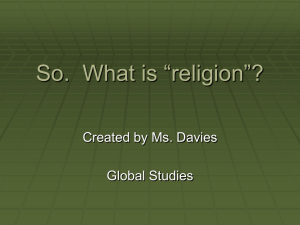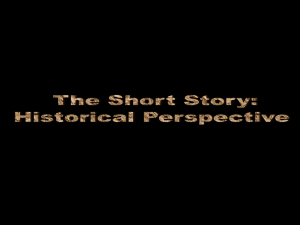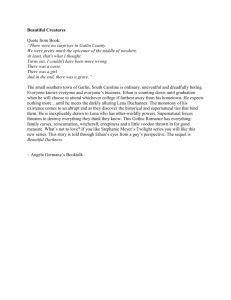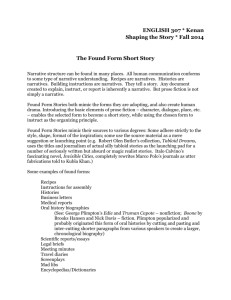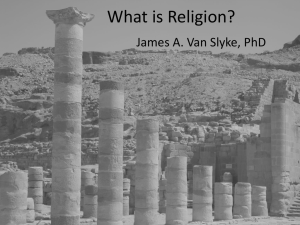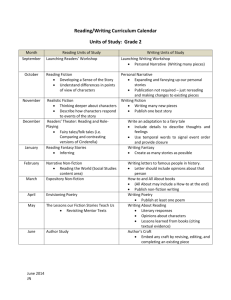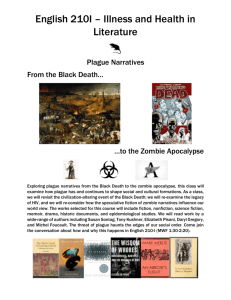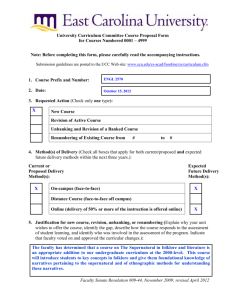ProgrammeNarrative and Belief
advertisement
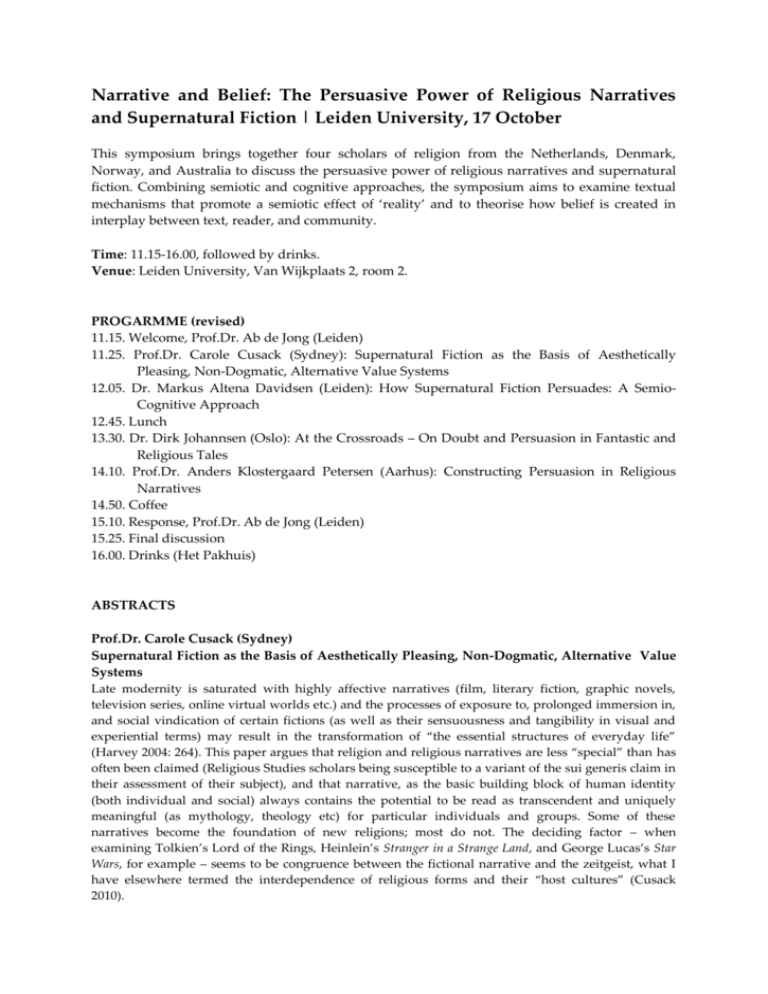
Narrative and Belief: The Persuasive Power of Religious Narratives and Supernatural Fiction | Leiden University, 17 October This symposium brings together four scholars of religion from the Netherlands, Denmark, Norway, and Australia to discuss the persuasive power of religious narratives and supernatural fiction. Combining semiotic and cognitive approaches, the symposium aims to examine textual mechanisms that promote a semiotic effect of ‘reality’ and to theorise how belief is created in interplay between text, reader, and community. Time: 11.15-16.00, followed by drinks. Venue: Leiden University, Van Wijkplaats 2, room 2. PROGARMME (revised) 11.15. Welcome, Prof.Dr. Ab de Jong (Leiden) 11.25. Prof.Dr. Carole Cusack (Sydney): Supernatural Fiction as the Basis of Aesthetically Pleasing, Non-Dogmatic, Alternative Value Systems 12.05. Dr. Markus Altena Davidsen (Leiden): How Supernatural Fiction Persuades: A SemioCognitive Approach 12.45. Lunch 13.30. Dr. Dirk Johannsen (Oslo): At the Crossroads – On Doubt and Persuasion in Fantastic and Religious Tales 14.10. Prof.Dr. Anders Klostergaard Petersen (Aarhus): Constructing Persuasion in Religious Narratives 14.50. Coffee 15.10. Response, Prof.Dr. Ab de Jong (Leiden) 15.25. Final discussion 16.00. Drinks (Het Pakhuis) ABSTRACTS Prof.Dr. Carole Cusack (Sydney) Supernatural Fiction as the Basis of Aesthetically Pleasing, Non-Dogmatic, Alternative Value Systems Late modernity is saturated with highly affective narratives (film, literary fiction, graphic novels, television series, online virtual worlds etc.) and the processes of exposure to, prolonged immersion in, and social vindication of certain fictions (as well as their sensuousness and tangibility in visual and experiential terms) may result in the transformation of “the essential structures of everyday life” (Harvey 2004: 264). This paper argues that religion and religious narratives are less “special” than has often been claimed (Religious Studies scholars being susceptible to a variant of the sui generis claim in their assessment of their subject), and that narrative, as the basic building block of human identity (both individual and social) always contains the potential to be read as transcendent and uniquely meaningful (as mythology, theology etc) for particular individuals and groups. Some of these narratives become the foundation of new religions; most do not. The deciding factor – when examining Tolkien’s Lord of the Rings, Heinlein’s Stranger in a Strange Land, and George Lucas’s Star Wars, for example – seems to be congruence between the fictional narrative and the zeitgeist, what I have elsewhere termed the interdependence of religious forms and their “host cultures” (Cusack 2010). Dr. Markus Altena Davidsen (Leiden) How Supernatural Fiction Persuades: A Semio-Cognitive Approach Drawing on (cognitive) narratology this paper proposes an explanation of how supernatural fiction persuades, i.e. how supernatural fiction is able to construct an ‘aura of factuality’ and attach it to its supernatural motifs. I catalogue and illustrate a number of ‘veracity mechanisms’ that contribute to this effect. These include ‘evidence mechanisms’ that affirm the reality of the supernatural within the narrative world, and ‘anchorage mechanisms’ that imply that the narrative ultimately speaks about the actual world rather than about a fictional world. Inspired by cognitive blending theory, I then demonstrate how veracity mechanisms of different sorts reinforce each other. Most fundamentally, the semiotic effect of ‘reality’ can be disembedded from the mechanism producing it, thus allowing the reality effects from different veracity mechanisms to add up to a ‘total reality score’. Furthermore, the plasticity of human cognition allows veracity mechanisms to be blended with each. Religious interpretations of supernatural fiction typically arise as blends of evidence and anchorage mechanisms yielding a reading of the text as ‘a fictional story about real supernatural entities’. Dr. Dirk Johannsen (Oslo) At the Crossroads – On Doubt and Persuasion in Fantastic and Religious Tales The paper provides a historical perspective on the question of “the persuasiveness” of supernatural tales. Persuasion implies doubt. Against the backdrop of a study on the conceptual history of “religion” and “oral tradition” in the 19th century, it will be shown how both textual and paratextual utterances of doubt became a defining feature in the classification of supernatural tales. The paper then focuses on critical re-evaluations of this classification towards the end of the 19th century, analysing the interplay of academic and literary approaches to the supernatural in Norwegian intellectual circles. Prof.Dr. Anders Klostergaard Petersen (Aarhus) Constructing Persuasion in Religious Narratives There is no construal of persuasion in narrative types of religious writings that is particular to this subset of literature. Narrative forms of religious literature are exploiting the same rhetorical and semiotic mechanisms that are intrinsic to any other type of literature devoted to persuasive purposes, be it commercials, ideological writings, etc. Yet, there may be a difference in degree with respect to the distribution of devices used to achieve the strived for purpose. In my paper I shall take a closer look at the formal, functional, and semantic dimensions of religious narratives with a particular focus on the means used to obtain ‘persuasivity’ in the performative staging of the texts under scrutiny. My prime focus will be on texts originating during the formative stage of the Christ-movement. Additionally, I shall concentrate on the use of counter-intuitive semantic elements in the religious writings based on the assertion that they may be particularly apt for attaining the aspired persuasive goal (cf. notably the work of Boyer).
